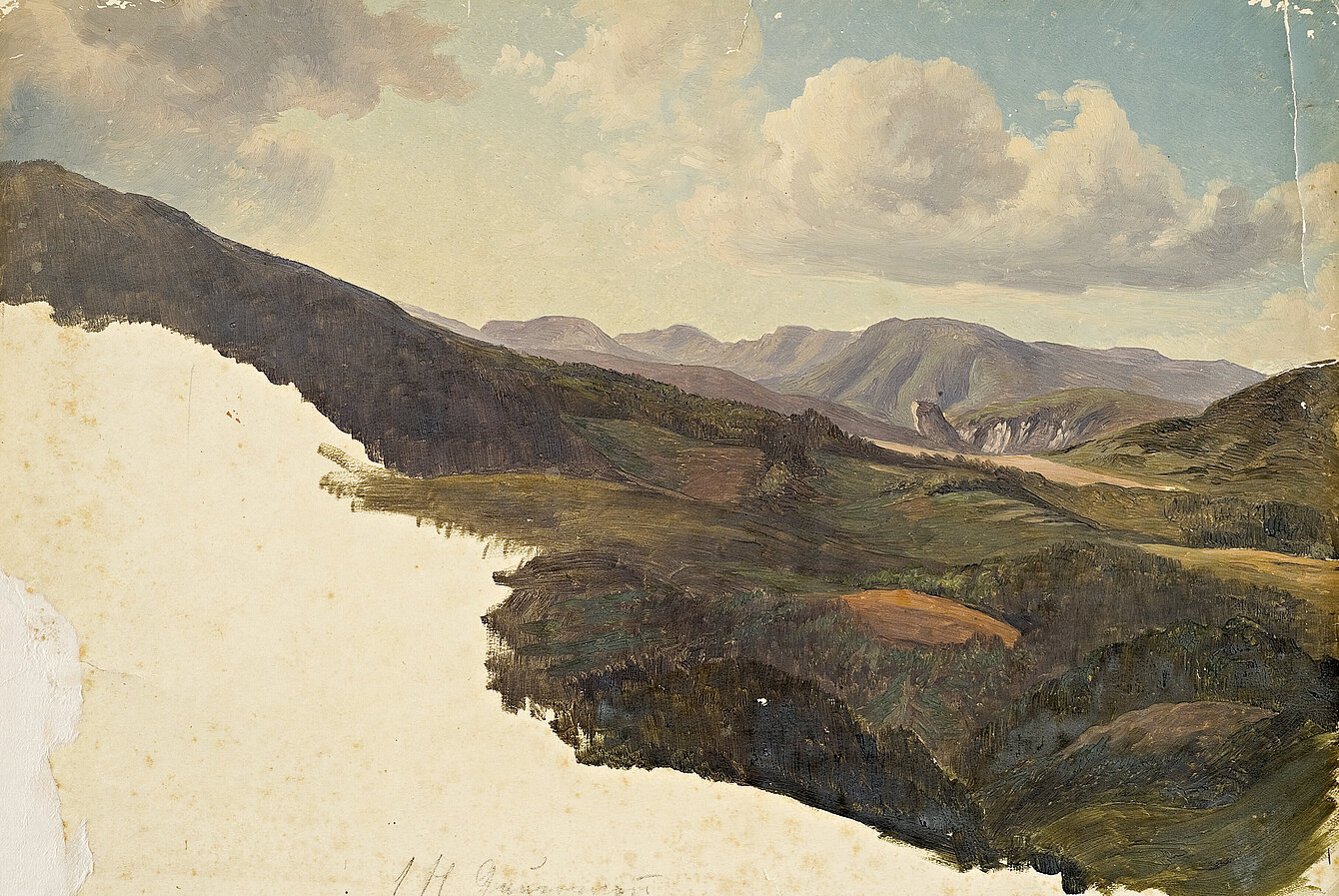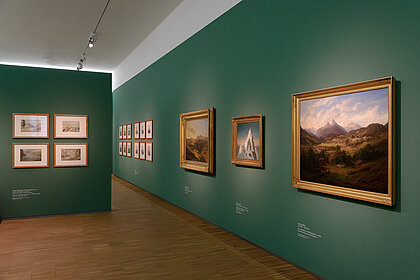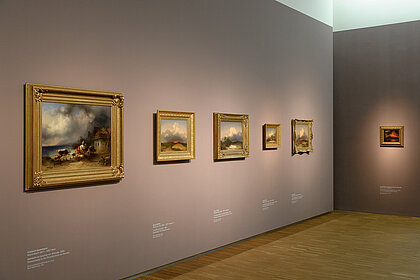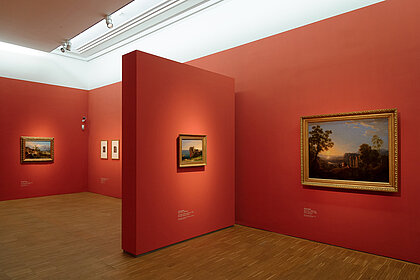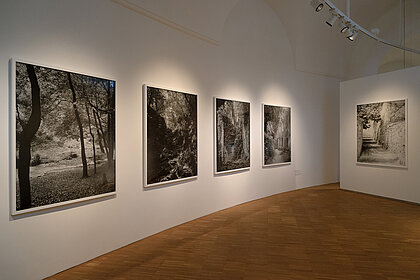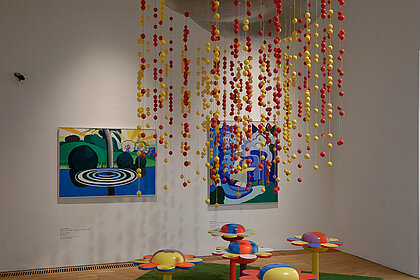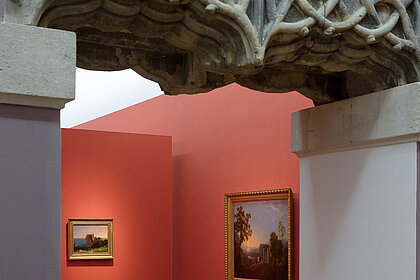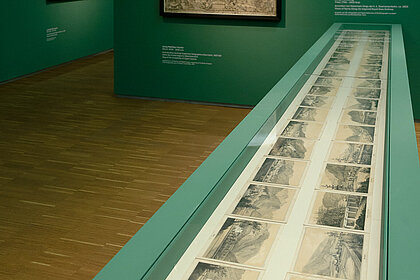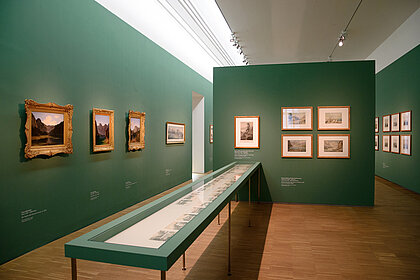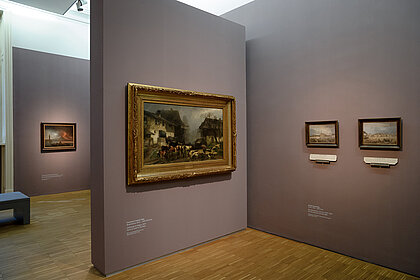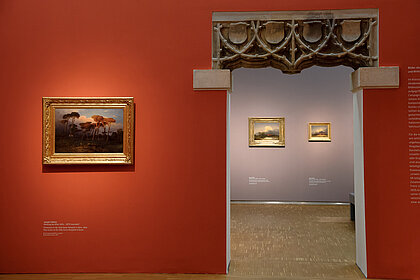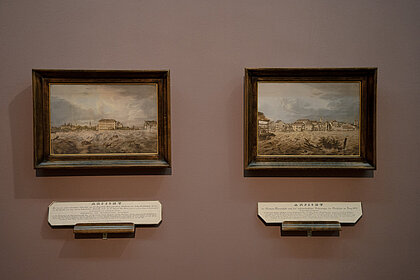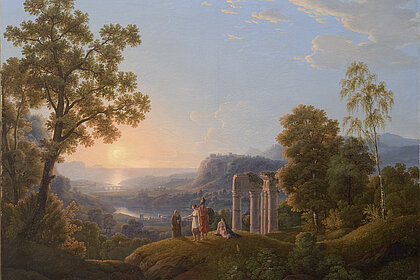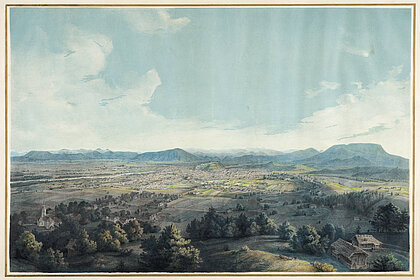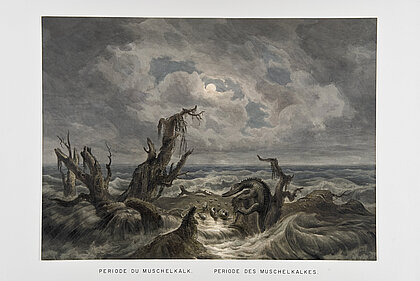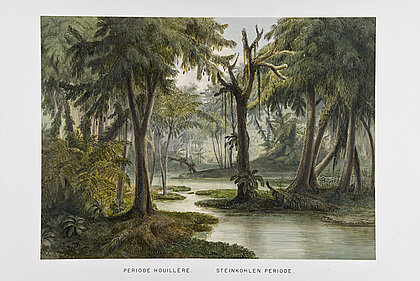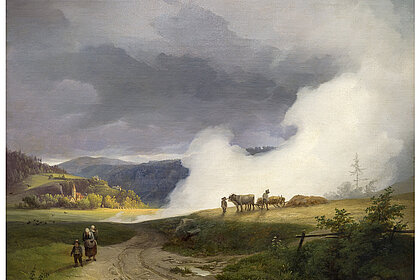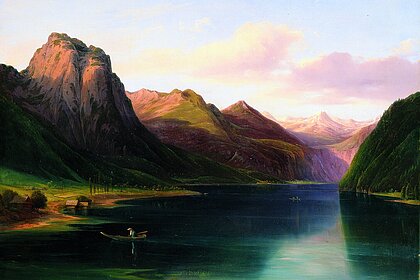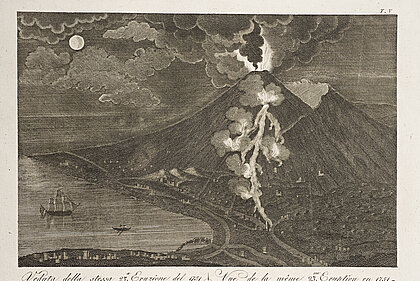The term “landscape” can be understood in many different ways – both inside and outside of artistic discourse. It can refer to the real living environment of a person or to an area visited by tourists or utilised for tourism. It can refer to land researched within different disciplines, or to land which is changed or used for various purposes.
Topics and artists in the exhibition
On the ground floor the following topics can be seen: opening up the landscape – transforming the landscape into an ideology – the idealisation of the landscape – autonomous nature – images of far away: between ideal and reality – geological research and visual representation.
There are pieces by Thomas Ender, Friedrich und Jakob Gauermann, Blasius Höfel nach Johann Peter Krafft, Johann Kniep, Vinzenz Kreuzer, Joseph Kuwasseg, Christian Friedrich Mali, Johann Nepomuk Passini nach Thomas Ender, Markus Pernhart, Ignaz Raffalt, Carl Reichert, Anton Schiffer, Alois Schönn, Joseph Selleny, Franz Steinfeld, Melanie Stürgkh nach Matthäus Loder, Georg Matthäus Vischer, Michael Wutky (attributed) etc.




















